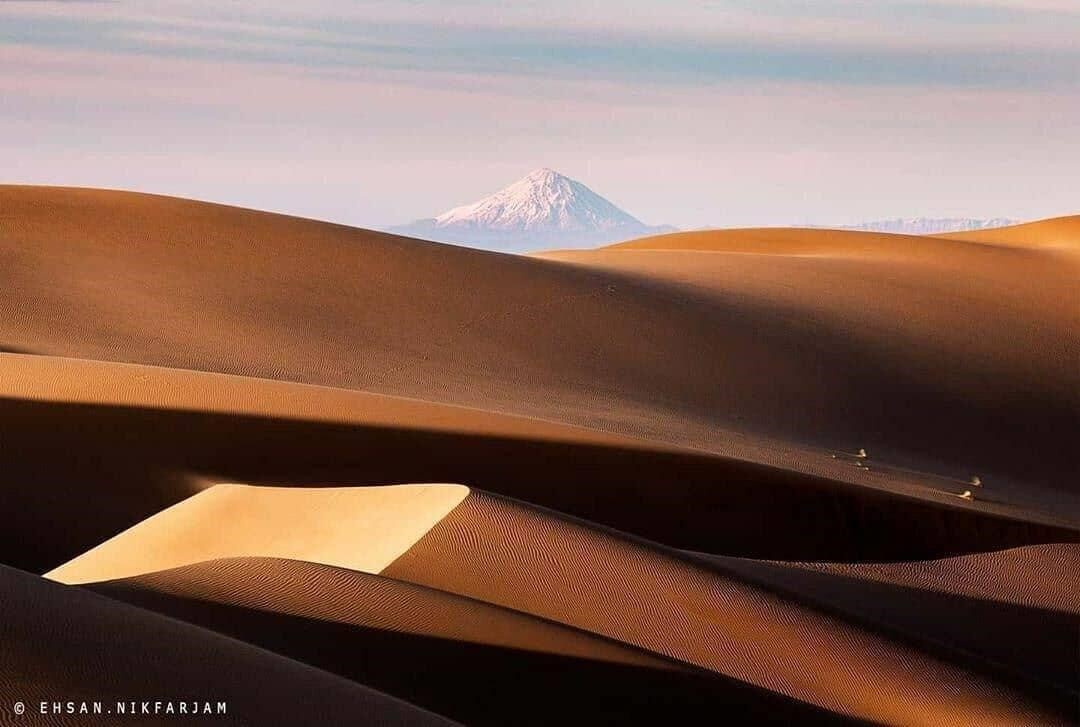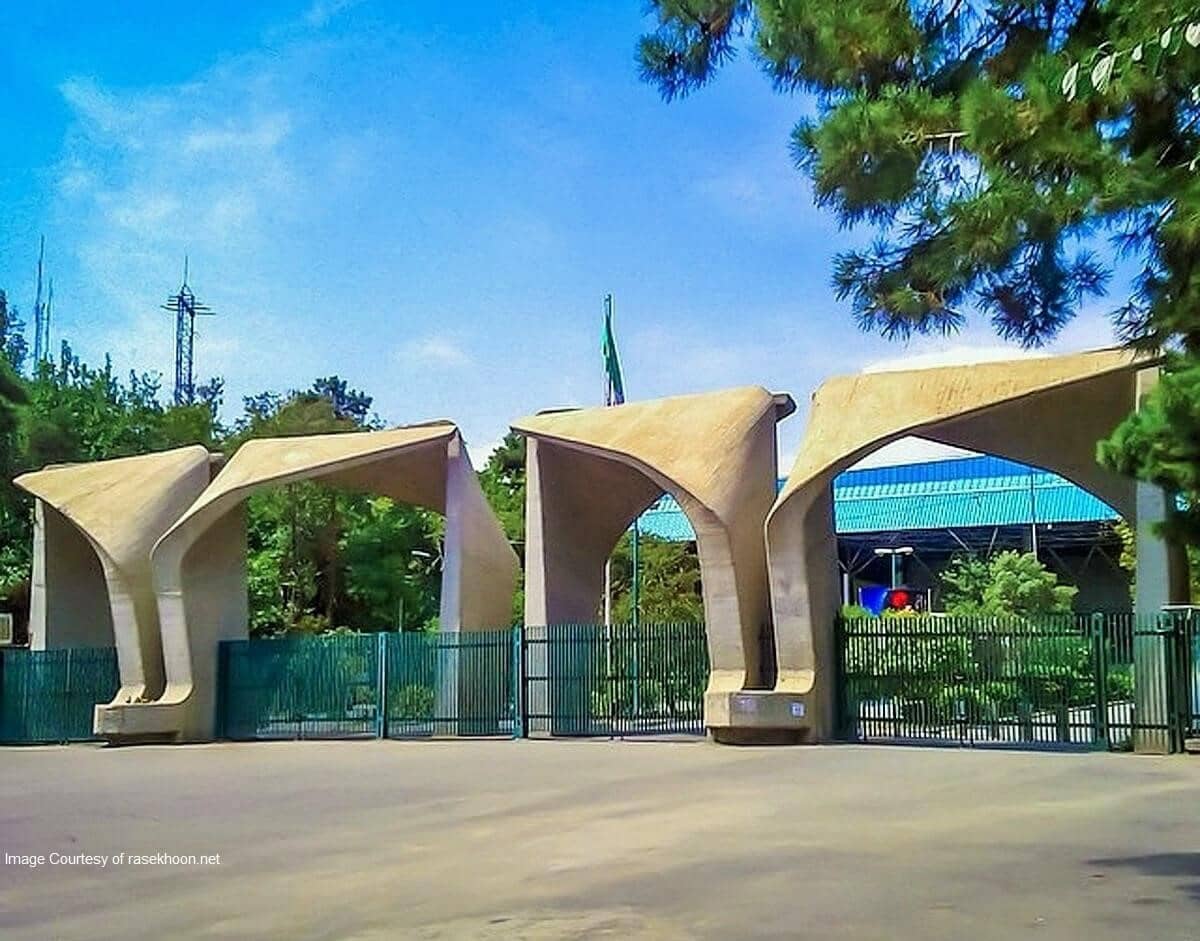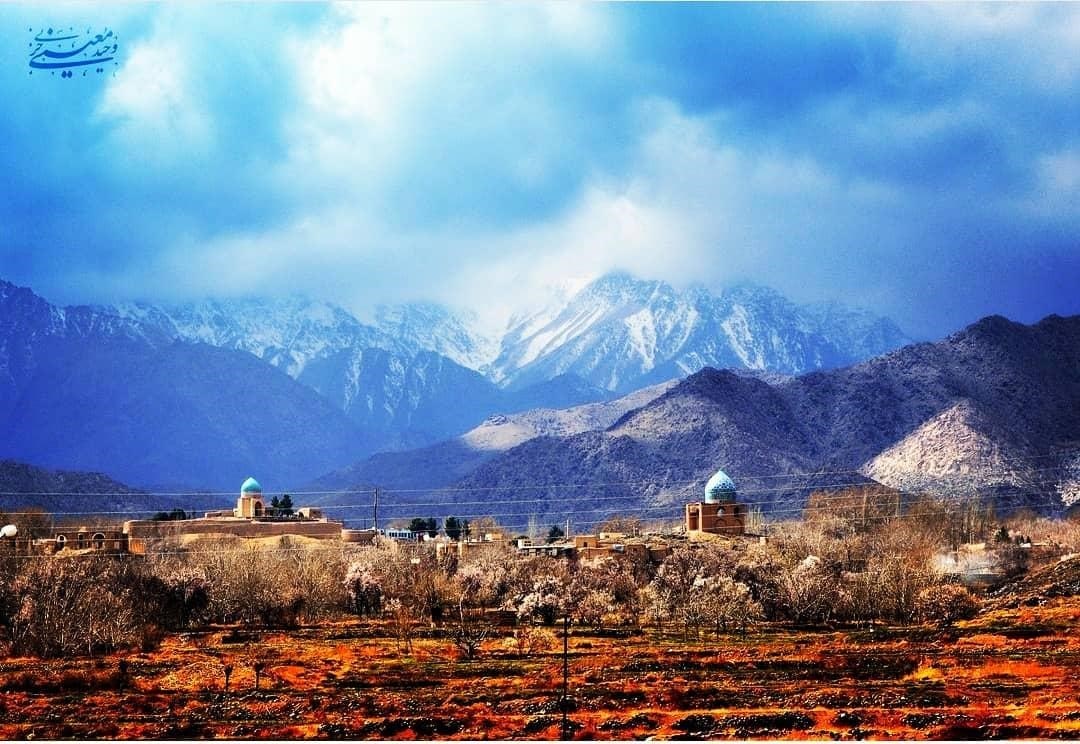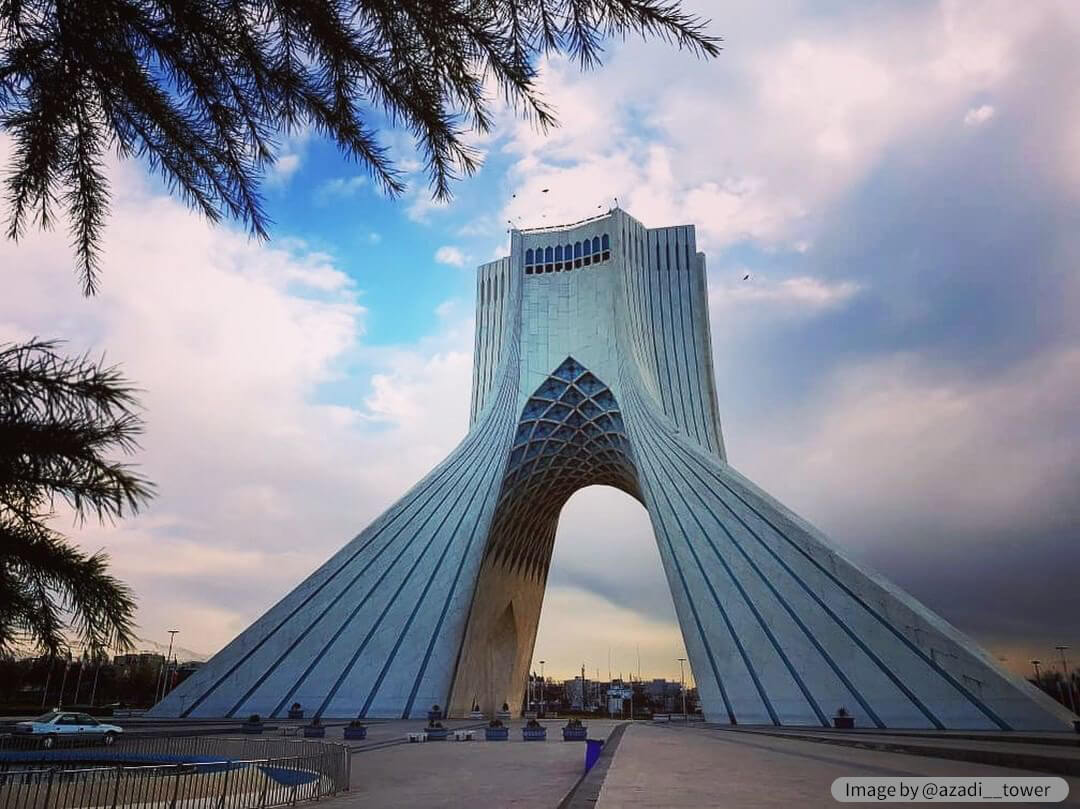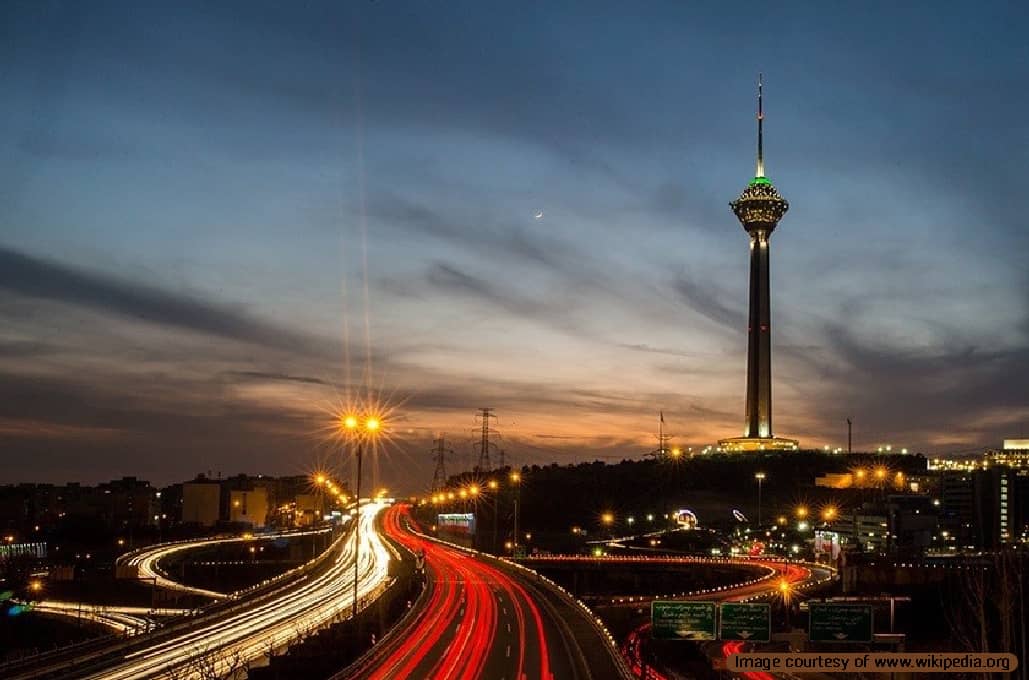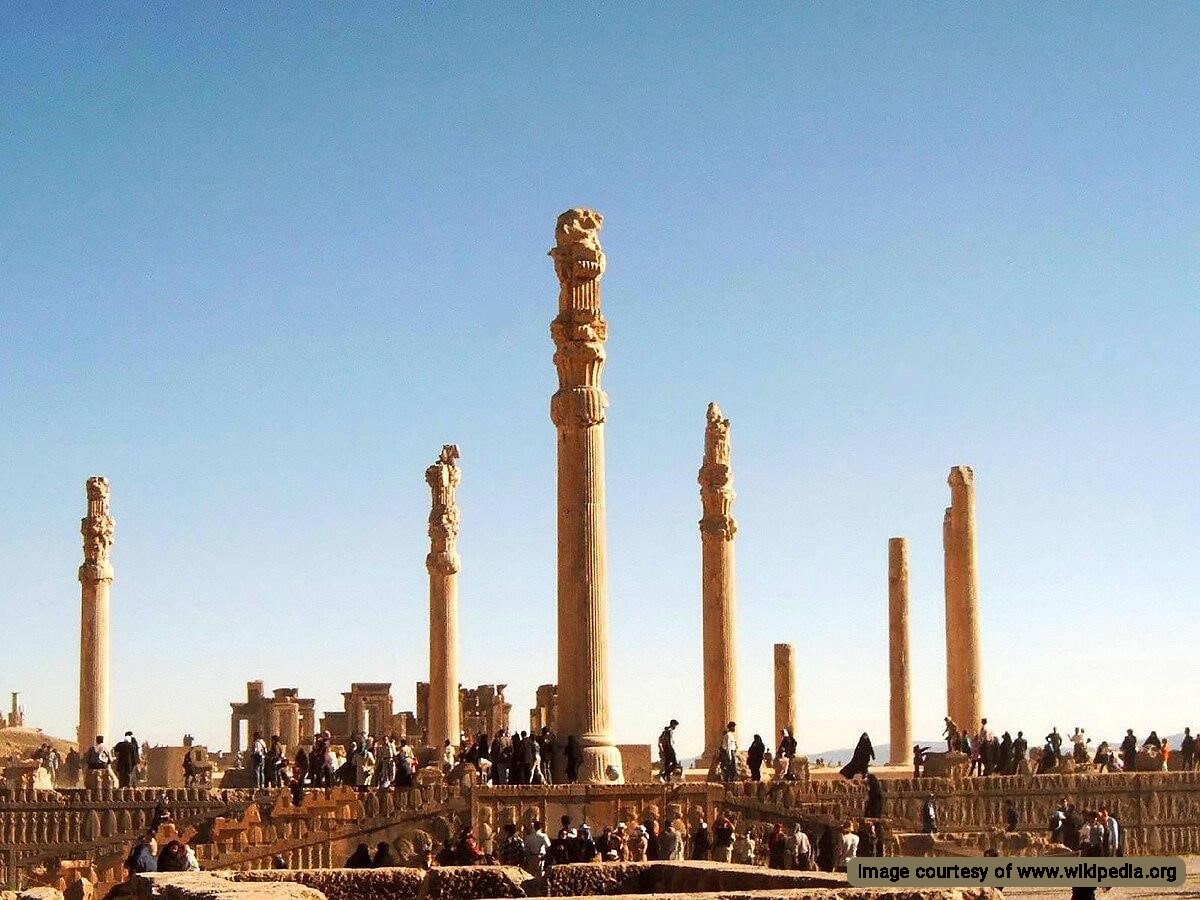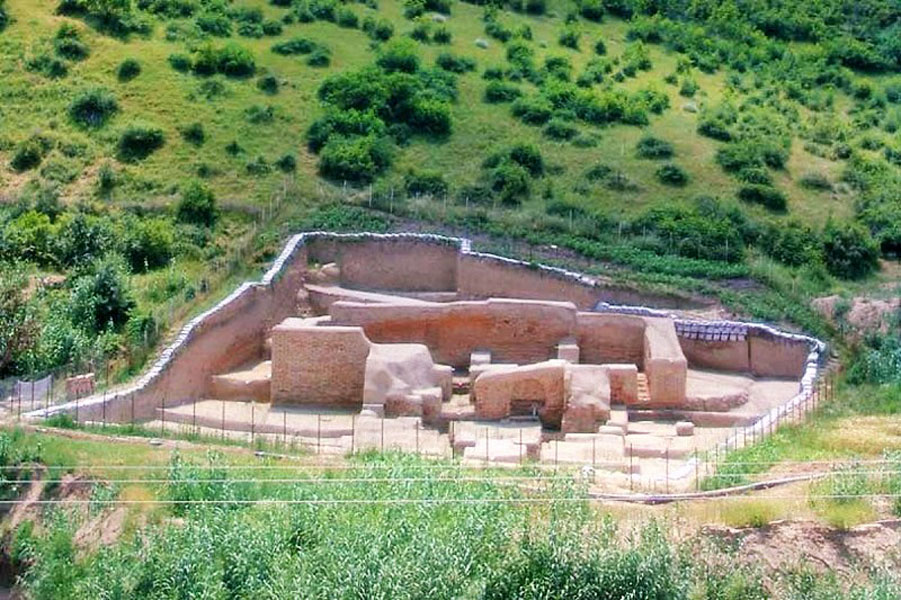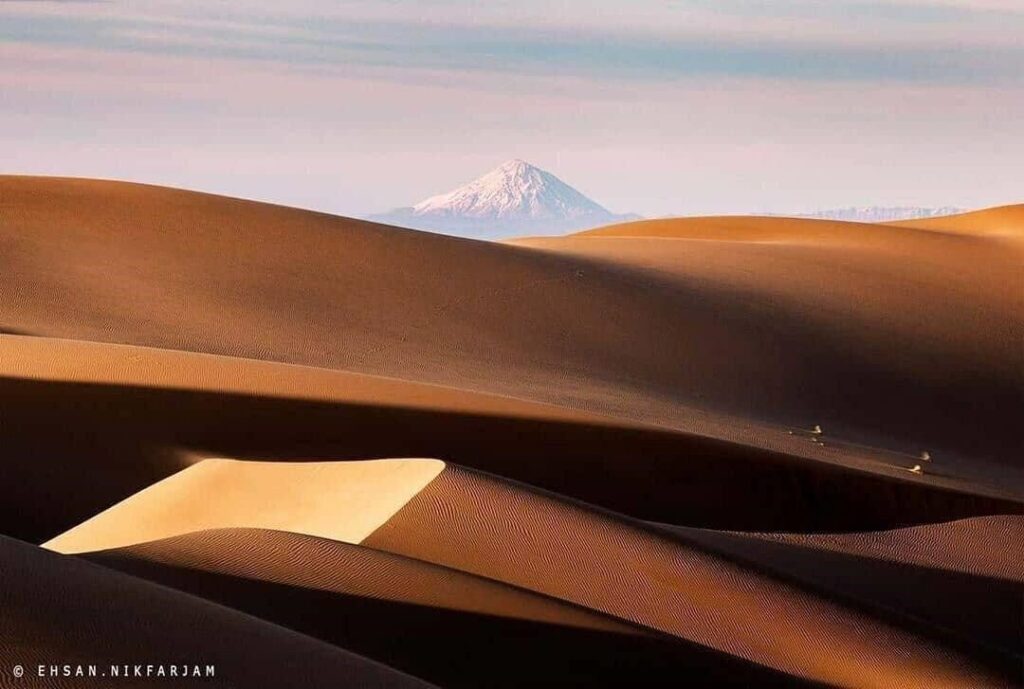
Maranjab desert is one of the most stunning deserts located in the north of Aran va Bidgol County. Aran o Bidgol County is part of Kashan City in Isfahan Province. This region is one of the most popular deserts in Iran that attracts many travelers. Promoting tourism in this area should be prioritized since it is located in a remote and marginalized region.
Ecotourism is one of the relatively new features in the area of desert tourism that includes navigating through scenic roads in the desert. In this article, we will introduce the historical and natural attractions in the Maranjab desert, one of the main Kashan tourist attractions.
Reason Behind the Name of Maranjab Desert
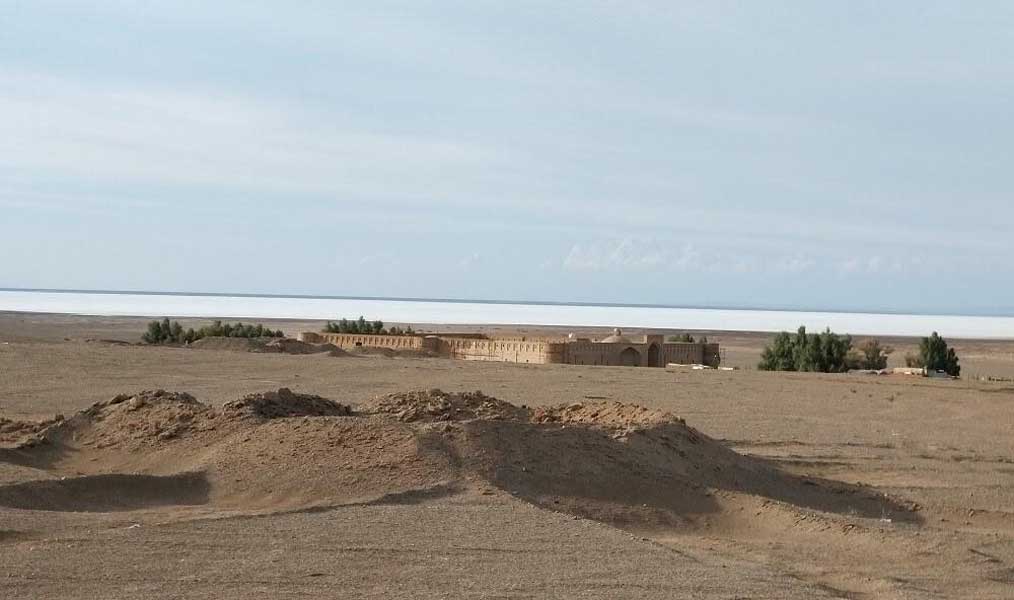
During the Safavid era (17th century) and the time of Shah Abbas I, a caravanserai was built in the heart of this desert in 1603. It was established by the then-ruler of Kashan, Agha Khezr Nahavandi. The caravanserai is located inside a small farm. The farm’s irrigation is supplied by two shallow wells located nearby.
This caravanserai and its freshwater aqueduct were named Maranjab. Therefore, the desert where the caravanserai was located was named the Maranjab Desert due to the reputation and prominence of the Maranjab caravanserai.
This caravanserai is located on the road from Isfahan to Mashhad. In addition to its role as a resting area for travelers, Maranjab Caravanserai has also served as a fortress to guard the Isfahan-Mashhad route from bandits.
Features of Maranjab Caravanserai
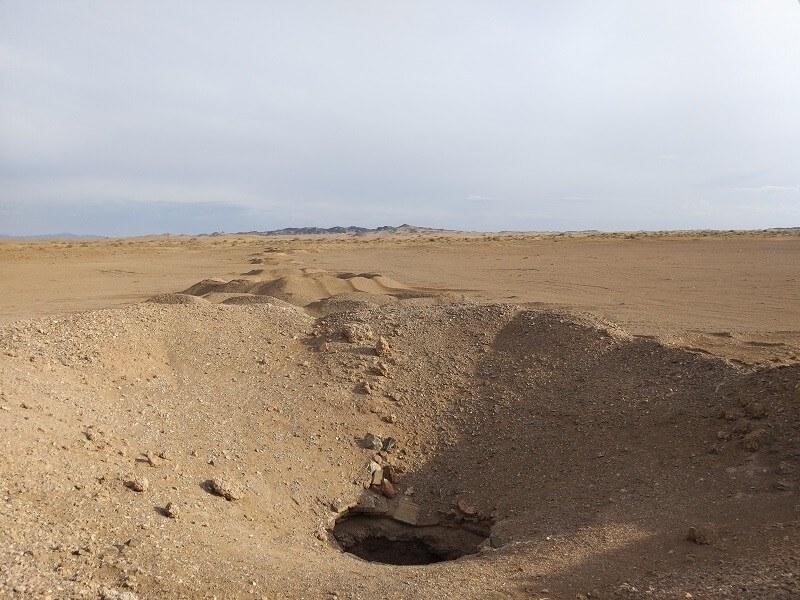
Maranjab Caravanserai is a square-shaped castle with an area of approximately 3500 square meters. The castle has six watch towers.
This caravanserai is located on a hill in the south of Namak Lake. The courtyard has dimensions of 20×30 square meters. There are chambers around the courtyard that have access to the courtyard through several stairs. There are 29 such chambers in the caravanserai.
Maranjab Caravanserai was still active until the Pahlavi period. This caravanserai lost its popularity during the Pahlavi era. The Pahlavi government decided to carry out major repairs on the caravanserai a few years before the 1979 revolution. The restoration project was abandoned in the heat of the revolution.
A few years after the victory of the revolution and in 1999, the caravanserai was acquired by the cultural heritage organization of Iran. Maranjab Caravanserai was repaired and restored under a project called Pardisan. The restoration process took about 4 years.
Now this building has been converted into a traditional hotel. All the chambers of the building have been restored and are available for rent to travelers. Maranjab caravanserai was registered in Iran National Heritage List in 2005.
Maranjab Desert Climate and Weather Conditions
In terms of climate, the Maranjab desert is relatively cold in winter and hot and dry during summer. The annual rainfall in this area is about 125 mm. In some parts of the desert, the air humidity is between 2 and 5%.
Wind plays the most important role in shaping the climate of desert regions. Shahriar and Shomal (north) winds are among the beneficial winds that pass through the Maranjab desert. The malign and destructive winds include the winds of Khorasan, Toofan, the black wind, and especially the Lavar Wind.
Maranjab Desert Tourist Attractions
There are a variety of Maranjab Desert tourist attractions. They can be divided into 4 general categories:
- Maranjab Desert Historical attractions: These tourist attractions are actually historical buildings from different eras. Among the historical attractions of the Maranjab desert, we can mention Maranjab caravanserai and Chah Dastkan (hand-dug well).
- Maranjab Desert Natural attractions: the pristine and scenic areas of the desert that existed naturally and before are among the natural attractions of the desert. Among the natural attractions, we can mention Sand dunes, Salt Polygons, and Wandering Island.
- Scientific Phenomena in Maranjab Desert: The flora and fauna resources in Maranjab desert require further scientific investigation. The low rainfall area means scarce vegetation that needs to be studied. In addition, due to the silence and serenity of the desert and the absence of elevation and urban light pollution, it is the perfect spot for stargazing.
- Therapeutic Properties: Humans have always sought serenity. Located in remote areas, the Maranjab desert and other deserts bless visitors with silence and peace. Also, sand therapy is one of the therapeutic features of the Maranjab desert.
9 Tourist Attractions in the Maranjab Desert
Deserts are fascinating destinations. Here we introduce some of them:
High Sand Dunes or Band-Rig Desert
The wind blows in the scorching deserts of Maranjab, shifting the sands. These sands are gradually deposited in one spot and form sand dunes. The height of some of these dunes reaches 20 meters. The reflection of sunlight on the dunes creates a breathtaking view.
Maranjab Aqueduct and Qanat Pool
There is a Qanat (aqueduct) near the Maranjab Caravanserai. The flow of water from the aqueduct has formed a small but beautiful pool of fresh water. As you know, access to water is vital in desert areas.
Namak Lake and Sargardan Island
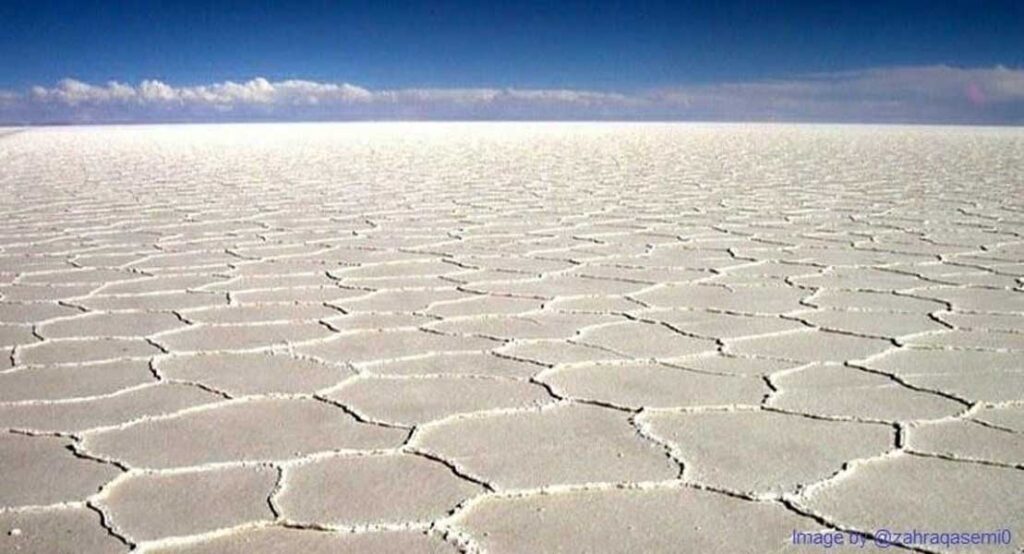
Maranjab desert Namak (Salt) Lake is a very scenic lake that attracts many domestic and foreign travelers. This lake is in the shape of a triangle whose base is facing north.
The rains and floods that wash away the desert salt fill the lake. The scorching heat of the desert evaporates the waters and the salt remains on the lake surface. Some salt crystals form beautiful geometric shapes and some are very large.
There are 6 islands in the lake, 5 are small in size and one is large. The large island is called Sargardan (Wandering) Island. It contains a mountain with an area of 5 square kilometers. This mountain is formed from volcanic rocks.
Chah Dastkan
Maranjab caravanserai is supplied by a hand-dug well located on the edge of the Salt Lake. This well has fresh drinkable water. It is said that Imam Reza (AS) dug this well during their trip to Khorasan. Hand-dug by the 8th Shia Imam, the well is known as the Chah Dastkan (hand-dug).
Maranjab Vegetation and Forest Area
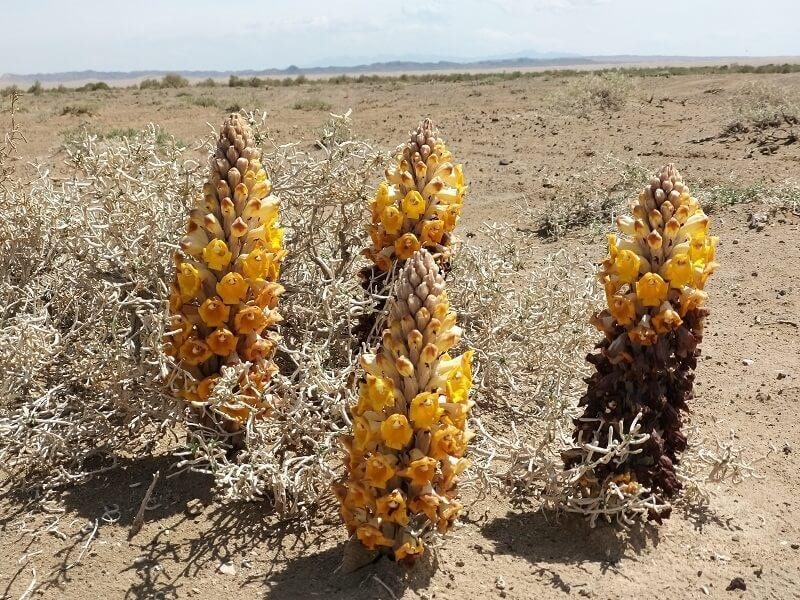
There is a forest called Jangal-e Tagh (Haloxylon forest). The presence of this forest in the scorched desert is surprising. This forest attracts many travelers every year.
The first is populated by stout and leafy trees called Tagh trees or Haloxylon, commonly known as Saxaul. Jangal Tagh is one of the natural attractions of the desert. In addition to the Tagh forest, the Maranjab desert has about 120 hectares of forest area that have been planted by people.
Among the other vegetation of the desert, we can mention the trees of Gaz (Tamarix or salt cedar), Ghich shrubs (Zygophyllum), Arteh plant or Eskanbil (Calligonum comosum or fire bush), and Dom-e Gavi plant (Cow’s Tail or Smirnovia urkestana Bunge). All these plants are salt-tolerant.
Maranjab Desert Wildlife
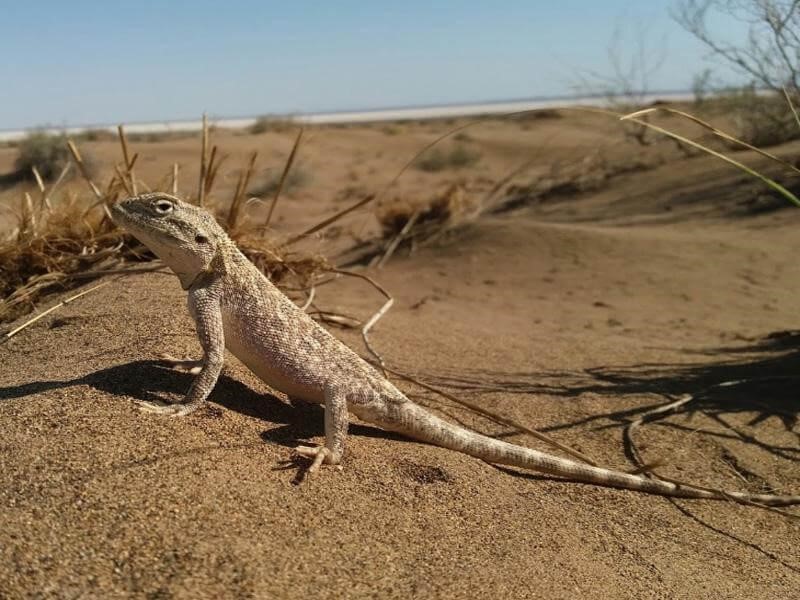
Since this Desert is rich in natural resources such as water and food wildlife, there is a notable presence of wildlife here. Among the predator wildlife in this area, the following are more common: Jackal, Wolf, Hyena, Sand Cat, and sand fox.
Also, in recent years, a pair of cheetahs has been sighted in the Maranjab desert. It is said that currently the number of these cheetahs has grown and they still roam the area.
Among other wildlife in the Maranjab desert, there are many species of lizards, snakes, scorpions, and Tiho (See-see partridge). We recommend avoiding direct contact with wildlife on your trip to the desert.
In this desert, there are also different species of birds of prey such as eagles and falcons.
The Beauty of Maranjab Desert
The desert offers deep tranquility and silence during the day and night. Desert nights are usually filled with bright and dazzling stars. These stars seem so close and giant in the desert that you can’t get enough of stargazing in this Iranian desert.
Laying on the sun-kissed sand during the day and gazing at countless stars at night is one of the main attractions of the Maranjab desert. Of course, you must check the sand before camping, because the nest of some creatures, including reptiles and venomous insects is a few centimeters below the surface of the desert.
Visit the Spectacular Maranjab Desert
Traveling is not only about visiting the forest, mountains, sea, and historical sites. Every region in the world has its own beauty. For example, even though the Maranjab desert is covered with sand for as far as the eye can see, it is an absolutely spectacular place.
Even without its tourist attractions, the Maranjab desert is a great destination for tourism. If you travel to Aran va Bidgol in Kashan on an Iran tour package or by yourself, don’t miss visiting the Maranjab desert in the north of Kashan.
We at Destination Iran suggest that you travel to the desert with an experienced guide. You can spend the night in the desert, and enjoy visiting other Kashan tourist attractions the next day.
Where is the Maranjab Desert?
Maranjab desert is located in the north of Aran va Bidgol city and is considered one of the districts of Kashan. You can see the location of the Maranjab desert below:
Frequently Asked Questions About the Maranjab Desert
If you cannot find the answer to your question here, leave us a comment in the comment section below this post and ask your question. We will answer it as soon as possible.
How long is the distance between Tehran and the Maranjab desert?
Maranjab desert is less than 300 km from the center of the Tehran metropolis. It will take between 4 to 5 hours to drive there depending on the flow of urban and road traffic.
When is the best time to travel to the Maranjab desert?
If you want suitable road conditions, milder weather, and to avoid insects, the best time to travel to the Maranjab desert is mid-autumn and early November. But remember that in the Maranjab desert, nights are extremely cold in the winter. If you travel to the Maranjab desert in winter, don’t risk setting up tents for a night in the desert, it is not recommended at all.
What are the basic tips for traveling to the desert?
To safely travel to the desert, you should consider these points:
• Finding out the best time to travel to that specific desert area
• Packing the necessary equipment
• Bringing enough water and food supplies
• Wearing suitable clothing for the desert climate
• Carrying a hat and sunscreen cream or spray
• Carrying electronic and analog navigational tools and a paper map
Is it possible to rent a house in the Maranjab desert?
There are many tourist accommodations in this desert, such as:
• Yaloo Hotel
• Shaker Eco lodge Residency
• Safa Ecotourism Hostel
• Ostad Morteza Ecotourism Residency
Where is Maranjab Desert Caravanserai? Is it open to the public?
Maranjab Caravanserai is located 50 kilometers northeast of Aran va Bidgol City and on the southwest edge of Kavir National Park.
Maranjab Caravanserai has welcomed many tourists in the past years.
In 2018, this caravanserai was renovated suitable facilities and is available to accommodate desert travelers.
What are the fun activities in the Maranjab desert?
Walking on shifting sands, riding a camel, riding an ATV, off-road driving, camping, and spending the night, gazing at the stars in the desert sky at night are among the fun activities in this desert.
Is it recommended to travel to the Maranjab desert in a private car?
We do not recommend traveling to the Maranjab desert in your own car. Because the road is very bumpy and it may damage your car and get you stuck in the desert. In addition, the risk of getting lost in the desert is very high. It is better to travel on a group tour, using special vehicles for off-road trips, accompanied by a tour guide.






